L'art graphique vectoriel est très important dans l'industrie de la broderie, connecter le monde du design numérique au produit brodé final. Ce type d'art crée de la douceur, Designs évolutifs qui gardent leur qualité, quelle que soit la taille, Le rendre parfait pour la broderie.
Contrairement aux images régulières, Les conceptions vectorielles ne perdent pas de clarté lorsqu'ils sont redimensionnés, ce qui signifie logos, texte, et les modèles complexes ont l'air net et professionnel sur n'importe quel tissu. En utilisant l'art vectoriel, Les brodeurs peuvent fonctionner plus rapidement, faire des modifications facilement, and produce high-quality results that match their clients’; besoins exacts.
De la personnalisation des articles à la création de vêtements de marque, Les conceptions vectorielles permettent à la fois la créativité et la précision, les rendre essentiels à quiconque dans la broderie moderne.
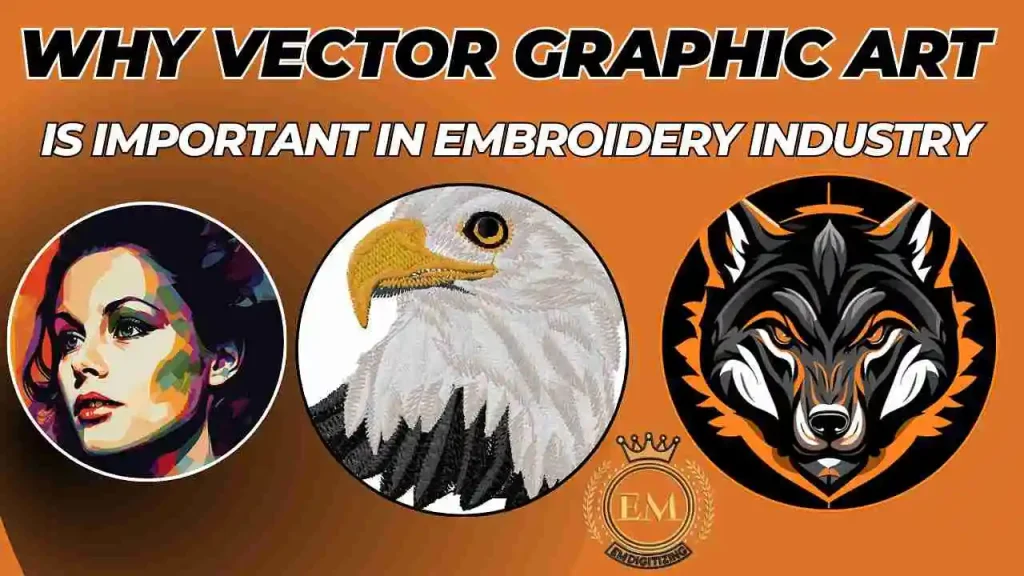
Pourquoi l'art graphique vectoriel est important dans l'industrie de la broderie?
Qu'est-ce que l'art graphique vectoriel?
C'est un type d'art numérique qui utilise des équations mathématiques pour créer des images, composé de points, lignes, et formes plutôt que les pixels. Cette méthode permet aux fichiers vectoriels d'être infiniment évolutifs sans perdre de qualité, Les rendre idéaux pour diverses applications, y compris les logos, illustrations, et les conceptions destinées à de grands formats comme les panneaux d'affichage ou les petits formats comme la broderie.
Ils sont généralement créés dans des logiciels tels que Adobe Illustrator ou CorelDraw et enregistrés dans des formats comme SVG, PSE, ou ai, qui conservent la qualité et la modification de la conception sur différentes plates-formes et appareils.
Avantages clés de l'utilisation de l'art graphique vectoriel dans la broderie
L'art vectoriel offre des avantages importants dans l'industrie de la broderie, permettre, évolutif, et des conceptions facilement modifiables. Voici quelques-uns des principaux avantages:
- Haute qualité et évolutivité
- Précision dans les détails
- Facilité de personnalisation et modifications
- Compatibilité des fichiers avec le logiciel de broderie
- Couture cohérente et précise
1. Haute qualité et évolutivité
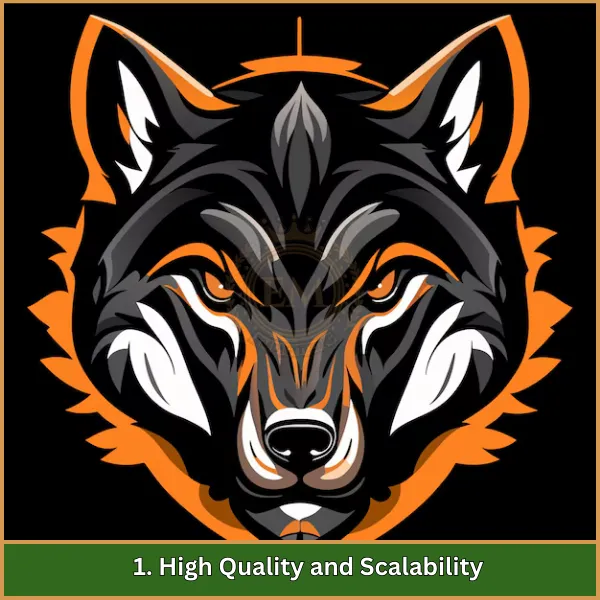
L'un des plus grands avantages de art vectoriel de conception graphique est son évolutivité. Puisque les graphiques vectoriels sont basés sur des équations mathématiques, Ils peuvent être redimensionnés à n'importe quelle dimension sans perdre de clarté ou devenir pixélisé. Cette fonctionnalité est cruciale dans la broderie, où les dessins doivent souvent être étendus vers le haut ou vers le bas pour s'adapter à différentes zones de tissu, s'assurer que même les plus petits détails restent nets et clairs.
2. Précision dans les détails

Les graphiques vectoriels d'art permettent des détails complexes qui sont idéaux pour le travail de broderie. Les lignes et les formes précises de l'art vectoriel peuvent être converties en points de suture avec précision, permettant de capturer des conceptions complexes, comme les logos ou les modèles détaillés, avec une haute précision. Ce niveau de détail améliore la qualité de la broderie finale, en particulier pour les conceptions nécessitant des arêtes vives et des frontières définies.
3. Facilité de personnalisation et modifications
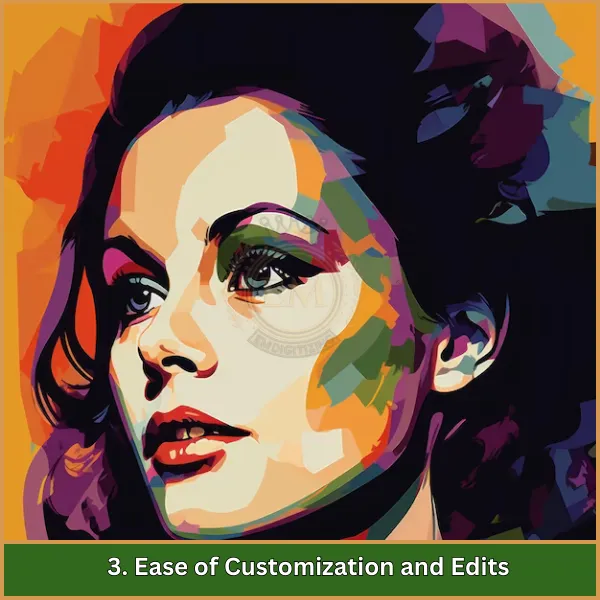
Les fichiers vectoriels sont très modifiables, Permettre aux concepteurs de modifier les couleurs, formes, et tailles sans affecter la qualité de conception globale. Cette flexibilité est particulièrement utile dans la broderie, où les clients peuvent demander des modifications ou des personnalisations. Les concepteurs peuvent rapidement adapter les fichiers vectoriels pour répondre aux besoins spécifiques, Rendre le processus de broderie plus efficace et réactif aux demandes des clients.
4. Compatibilité des fichiers avec le logiciel de broderie
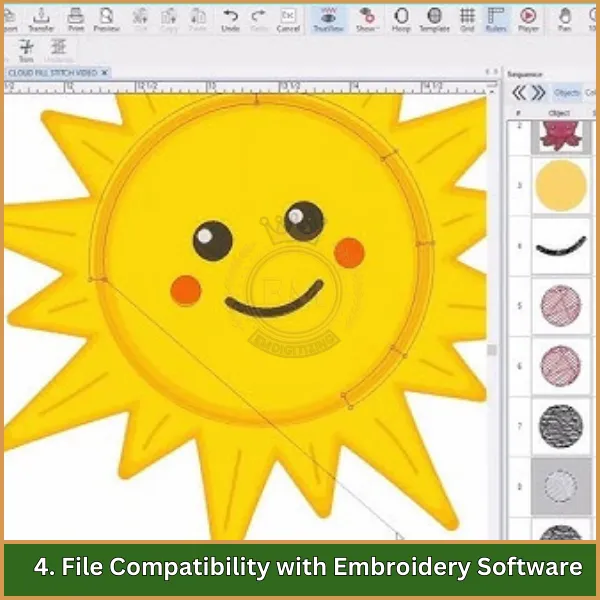
Fichiers vectoriels, comme ceux de SVG, PSE, ou formats AI, sont compatibles avec la plupart des logiciels de numérisation de broderie. Cette compatibilité garantit que les conceptions peuvent être facilement importées et converties en formats de broderie comme DST ou PES. L'utilisation de fichiers vectoriels compatibles simplifie le processus de numérisation et aide à garantir que la sortie finale reflète avec précision la conception d'origine.
5. Couture cohérente et précise
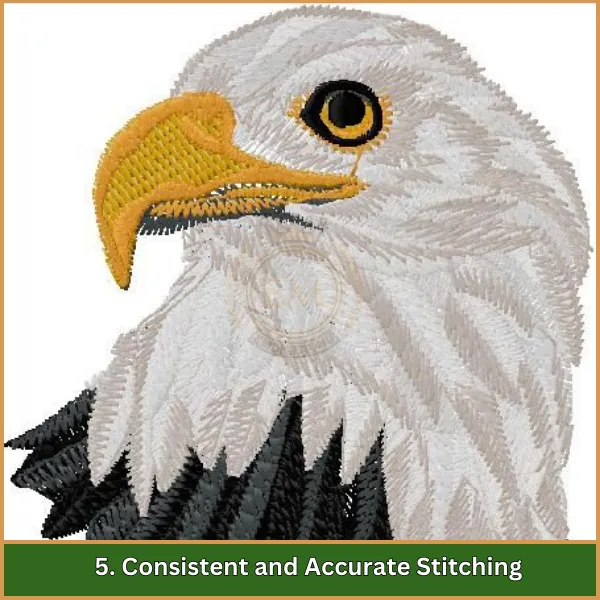
Lorsque l'art graphique vectoriel est Numérisé pour la broderie, il se traduit par des modèles de points cohérents sur diverses applications. Puisque les éléments de conception dans les fichiers vectoriels sont défini mathématiquement, La machine à broder peut suivre les chemins exacts, produisant des coutures uniformes et précises. Cette cohérence est essentielle pour maintenir la qualité, surtout lors de la production d'articles brodés en vrac.
Types de conceptions de broderie créées avec de l'art vectoriel
En utilisant Art vectoriel en broderie ouvre un large éventail de possibilités de conception. Voici quelques types communs de conceptions de broderie qui sont souvent créées avec de l'art vectoriel:
1. Logo Broderie
Les graphiques d'art vectoriel sont idéaux pour les conceptions de logo car elles préservent les lignes nettes, formes, et couleurs, Assurer que les logos de marque restent nets et d'apparence professionnelle sur les produits brodés.
2. Monogrammes et initiales
L'art graphique vectoriel permet un lettrage précis et un style complexe, Le rendre parfait pour les monogrammes et les initiales, qui sont populaires dans les projets de broderie personnels et professionnels.
3. Motifs et textures complexes
Modèles et textures détaillés, y compris les fleurs, formes géométriques, et conceptions abstraites, peut être facilement converti à partir de l'art vectoriel, Maintenir des niveaux de détail élevés dans la broderie.
4. Mascottes et personnages
Mascottes et personnages brodés, Surtout pour les équipes ou les marques, bénéficier de la capacité de Vector Art à capturer des fonctionnalités détaillées et des tailles évolutives sans perte de qualité.
5. Conceptions textuelles
Citations, noms, ou des phrases promotionnelles sont fréquemment conçues au format vectoriel pour la broderie, Permettre une échelle facile, édition, et précision de police.
Meilleures pratiques pour l'utilisation de l'art graphique vectoriel dans la broderie
L'utilisation de l'art vectoriel et des graphiques pour la broderie nécessite une attention particulière aux détails pour s'assurer que les conceptions se traduisent bien dans les points. Suivre ces meilleures pratiques aidera à obtenir des résultats brodés de haute qualité et précis.
- Choisissez le bon format de fichier: Utilisez des formats de fichiers vectoriels compatibles, comme SVG, PSE, ou ai, Pour assurer une conversion facile en logiciel de broderie.
- Simplifiez les conceptions complexes: Évitez les détails trop complexes qui peuvent ne pas se traduire bien dans la broderie; Simplifiez les éléments tout en maintenant l'intégrité de la conception.
- Sélectionnez les couleurs et les traits appropriés: Limiter les couleurs et utiliser des remplissages solides et des contours clairs, car les gradients ou les accidents vasculaires cérébraux peuvent être difficiles pour que les machines de broderie se reproduisent avec précision.
- Assurer une superposition et un regroupement appropriés: Organisez des éléments en couches ou en groupes dans le fichier vectoriel pour faciliter un processus de numérisation plus facile et plus efficace.
- Optimiser la taille de la broderie: Ajustez la conception vectorielle à la taille de la broderie; Assurer que les détails seront clairs et proportionnels, Même à petite échelle.
- Utilisez des bordures claires et définies: Utiliser Clear, Arêtes définies pour chaque élément de conception, Comme ceux-ci fournissent des chemins de couture clairs pour la machine.
- Test Run sur le tissu: Testez toujours votre vecteur conception de broderie sur le tissu prévu pour s'assurer que la conception se traduit bien de l'écran à la couture.
- Maintenir la cohérence en épaisseur de ligne: Gardez les épaisseurs de ligne cohérentes pour assurer une qualité de point uniforme tout au long de la conception.
Conclusion
Se terminer, L'art graphique vectoriel a transformé la broderie en livrant la précision et l'adaptabilité essentielles pour créer des conceptions de haute qualité. Si vous êtes prêt à donner vie à vos créations, EMdigitizing est là pour vous aider!
Nous offrons des services de numérisation professionnelle avec un engagement envers la qualité, délais d'exécution ultra-rapides, et des tarifs abordables. Notre option d'aperçu vous permet de revoir votre conception avant de finaliser, S'assurer que c'est exactement ce que vous envisagez.
Et en tant que client pour la première fois, profitez d'une exclusivité 50% rabais. Découvrez le EMnumérisation différence et élevez votre broderie aujourd'hui!
